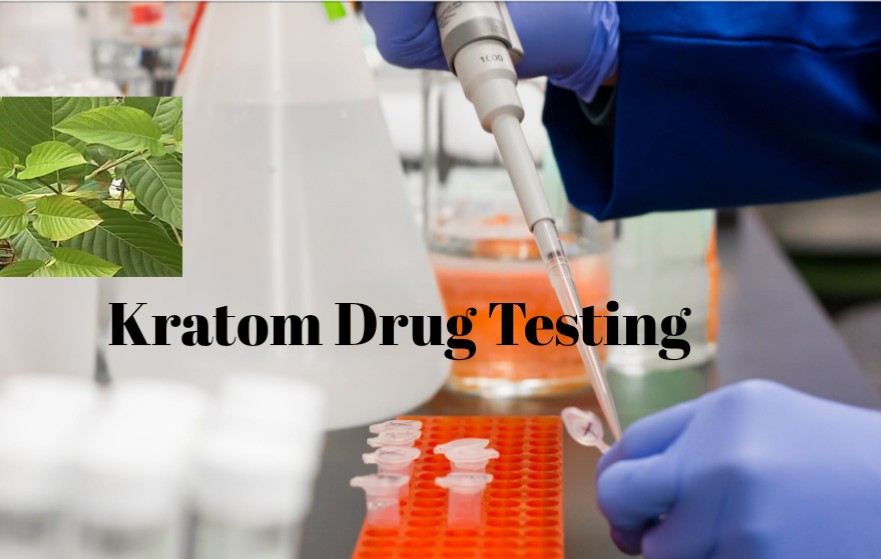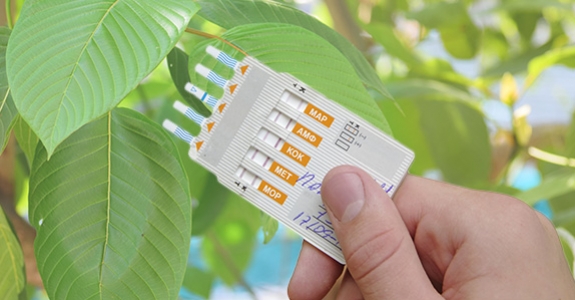Even though they could be intimidating, drug tests are not exactly innovative.
For years, everybody from HR managers to probation officers has requested that people require a drug test to ensure that there are no prohibited substances in their system that may impact their health, safety, or operation.
Are you gearing up to take you yourself? If so, it’s normal to feel a little apprehensive, especially when something as straightforward as poppyseeds could render an unfavorable result.
Should you use kratom on a regular basis, you might be especially concerned. That is why it’s important that you know the facts around kratom and drug tests.
Nowadays, we’re discussing 11 important details that can ease your mind and help you get ready for the big day. Read on to discover the facts you want to know to pass your exam and move on.

1. Kratom Can Appear on a Drug Evaluation
Many men and women are drawn to kratom below the belief it won’t appear on any drug tests. On one hand, it’s correct that it may go unnoticed in standard tests like the Substance Abuse and Mental Health Services Administration’s Five-Panel evaluation (SAMHSA-5). This test checks for the presence of five common categories of drugs, for example:
- Amphetamines
- Marijuana
- Cocaine
- Opiates
- Phencyclidine (PCP)
Still, it’s unwise to assume that atom won’t appear on the drug test you take.
In fact, kratom alkaloids are detectable in certain test formats, including urine tests and blood tests. There’s even a specific drug test made solely around kratom testing, known as the Kratom 10-Panel Drug Test. However, a standard, extended 10-panel urine test will still show a negative result if kratom is the only substance on your system.
This is because the kratom plant, or Mitragyna speciosa, has a different chemical makeup in the illegal narcotics that contemporary drug tests were created to discover.
2. Urine Tests Are More Likely
Is the company administering a drug test specifically to look for traces of kratom? If so, they are more inclined to decide on a urine test over a blood test.
Why? Blood tests normally have a shorter detection window, and unless the testing takes place shortly after the drug usage, it can be difficult to detect accurate amounts. In addition, blood tests are more invasive and involved.
If you’re scheduled to get a urine test, make certain that you tell the individual conducting the test when you have taken any prescription medications or supplements in the days prior. Although it isn’t possible for the presence of kratom alkaloids to result in a false positive, the existence of some other substances could cause such a result. For instance, if you have elevated levels of aspirin or pseudoephedrine in your system, these could cause your test to read as favorable.
3. Kratom is lawful in Most of the U.S.
On the national level, kratom is not considered an illegal substance. In 2016, the Drug Enforcement Administration (DEA) sought to classify it as a Schedule 1 drug, which could have meant hefty fines and even jail time for anyone caught in possession of it.
Following intense public outcry, the DEA changed its mind, describing that further research on the makeup and consequences of kratom was required. Instead, individual nations were permitted to put their own guidelines governing kratom use.
To date, all but six states in the U.S. have approved the legal use of kratom. Those that don’t comprise:
- Arkansas
- Alabama
- Indiana
- Tennessee
- Vermont
- Wisconsin
To this end, employers have a tendency to concentrate more on other illegal materials that are easy to discover on a normal test, like the SAMHSA-5.
4. It is Their Right to Drug Test
Though kratom is not a commonly tested-for substance, an employer is within their rights to administer a test to check for it. That is true if they have a reason to feel that you are misusing kratom. This can lead to side effects that could affect your overall productivity levels and create a workplace dangerously.
If your employer maintains a drug-free workplace policy, they would be within their rights to request and conduct a kratom evaluation, regardless of whether or not the substance is legal in your state. In a similar way, they can also test for the existence of prescription drugs, though they are lawful.
5. It is Important to Know Kratom’s Half-Life
The half-life of a material is the time that it requires to reduce to half of its initial value. This is an important value to know, as it can help you figure out the length of time kratom will stay in your system.
Not only can this help you plan for a kratom drug evaluation, but it can also indicate when you may start to feel withdrawal symptoms if you build dependency on kratom and opt to stop using the material.
While kratom’s half-life has only been studied extensively in animals, researchers estimate that Mitragynine, the principal alkaloid compound found in kratom, has a half-life of 23.24 hours.
What exactly does this mean for you?
Utilizing this data, it might take almost 24 hours, or a full day, for you to remove half (50 percent ) of the atom which you ingested into your entire body. In about five times, the atom would be fully eliminated from the body. That means if you are aware you have a kratom test every week, then you should abstain from taking kratom at least five days prior to ensure there isn’t any traceable amount detected.
6. You Have an Exceptional Reaction to Kratom
Knowing that the half-life of Mitragynine is a fantastic place to get started. Yet, the duration of time that kratom remains on your system will be different from the length of time it stays in your neighbor.
There are a few different factors that affect your elimination time. These include:
- Your era
- Your body fat percentage
- Your General water and food consumption
- Genetic markers and enzymes
Each individual differs, but research indicates that older adults over the age of 65 have a longer elimination half-life compared to their younger peers. Along with age-related physical differences, this could also be because seniors often take more medicines that could interact with kratom differently.
Additionally, people who have a high body fat percentage are far more inclined to keep kratom for longer. This is only because Mitragynine is highly fat-soluble.
7. High-Fat Meals Mean Quicker Absorption
There is a reason why it’s suggested to take kratom on an empty stomach. Ideally, it’s ideal to take it first thing when you wake up, then wait some time before breakfast. If you choose it after breakfast, allow at least an hour after your meal to aid in digestion.
As you prepare for your kratom drug test, it helps to understand the absorption speed of the substance. Taking kratom alongside a high-fat meal could enable your own body to consume it faster. If you’re looking to enjoy its sedative effects, this could be a drawback. However, if you are trying to eliminate as much as you can before your evaluation, it’s a fantastic thing.
Quicker absorption will hasten the quantity of time which kratom necessitates to reach its peak concentration. From that point, your body can begin slowly ridding itself of the material.
8. Detection Differs By Test
There are a couple of distinct methods employers can check for kratom. The four most Frequent types of evaluation include:
- Urine tests
- Blood evaluations
- Hair evaluations
- Saliva tests
Urine tests are the most popular, as well as among the most effective. Trace amounts of kratom alkaloids can remain in urine for up to a week. While blood tests can show concentration amounts of kratom, they are most precise when used on individuals who regularly ingest high levels of this material.
While kratom metabolites can appear in saliva, these tests are most often reserved to detect the presence of illegal substances. As kratom is legal in virtually every state, oral fluid tests aren’t used as frequently. At length, hair tests are the most commonly used kind of kratom testing. This is since it is unlikely that the alkaloids would show up in hair follicles.
In addition, detection times don’t just differ by test type. There are also other aspects that determine how long kratom can remain in the body. These include:
- Your own body weight and body fat percentage
- Your era
- Your metabolic rate
- The existence of other substances in your system (e.g. alcohol or tobacco)
- The amount of kratom you recently used
- Your liver health and function
- Any other co-occurring health issues you may have
When taking kratom prior to a pre-scheduled drug test or office screening, then keep the above aspects in mind. When some evaluations can be performed in an unexpected manner, if you have time to prepare ahead, it is ideal to do so.
9. The Mitragynine Cut-Off Level is Little
When choosing a typical Liquid Chromatography-Mass Spectrometry (LC-MS/MS) test, it’s important that you be aware of the cut-off levels for Mytragynine detection. In drug screening, cut-off levels are the minimum detectable amounts of a substance that the evaluation must recognize to leave a positive result.
To this end, remember that a drawback kratom test does not necessarily signify there was no kratom found in your system. Rather, it simply means there was not enough kratom present to meet the minimal cut-off level.
Most LC-MS/MS tests have an established 1 ng/ml cut-off level for Mytragynine. If you’ve got more than one nanogram per milliliter of kratom within your body, the test will show a favorable outcome.
10. Testing is a Challenge
There are a number of substances, such as cocaine or cocaine, that are easier to detect through drug testing compared to others. Kratom is an especially challenging subject, also it helps to understand why.
While both main chemicals in kratom, Mitragynine and 7-α-hydroxymitragynine, are comparatively simple to detect on their own, there’s a large number of additional compounds that can muddle the outcomes.
Additionally, the kratom plant also contains three distinct chiral centers and as many as eight diastereomers. While these terms are technical and very scientific, the main takeaway is the molecular makeup of a kratom leaf is complex and complicated in nature. This will make testing difficult at best.
11. New Drug Tests Are Being Developed
While kratom-centric drug evaluations are rare, this doesn’t appear to be true for long. Developers are working on new medication tests to detect the existence of this substance in the body, so it pays to do your research and understand the ramifications and consequences of using kratom, especially in the workplace.
However, these tests will most likely be reserved for extreme cases and aren’t anticipated to enter the normal employer drug screening rotation any time soon. This is primarily attributed to the lack of industry knowledge that exists around kratom and the demand for additional research to be conducted.
Discover More About Kratom and Drug Tests
Drug tests aren’t the most agreeable portion of linking the workforce. Yet, they are important processes that can keep your teammates safe and healthy.
If you enjoy carrying kratom for pain relief, energy boosts, and enhanced clarity, you don’t need to live in constant fear of being exposed to these diagnoses. There is still much research that has to be carried out around kratom and drug evaluations, and most employers remain more focused on identifying illegal opiates than anything else.
However, these 11 facts are important to understand. Since kratom becomes more popular, it is anticipated that testing approaches will sophisticate and eventually become more widespread.
Have any questions about kratom? Want to learn more about how you can purchase premium, high-quality kratom powder in an industry-leading supplier? Feel free to navigate our online shop and contact us with any questions!
